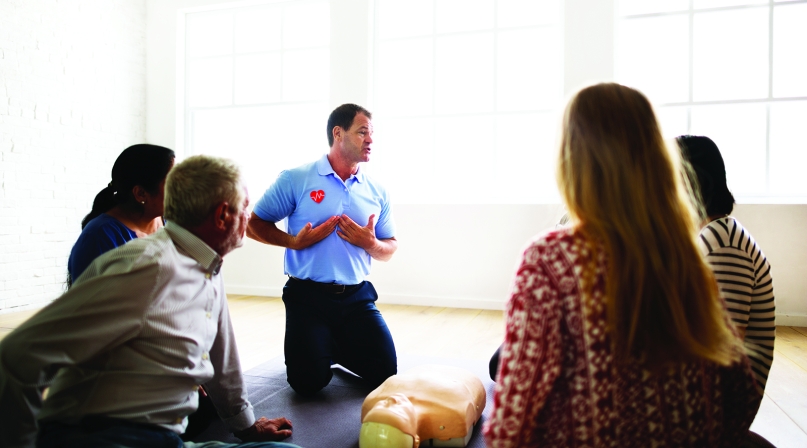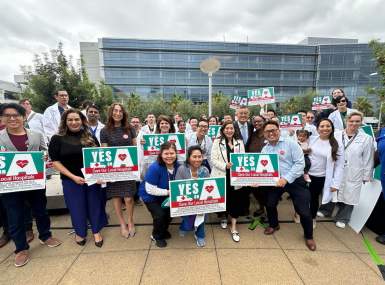It’s American Heart Month: Are you prepared?
Author
Upcoming Events
Related News

What would you do if someone collapsed in your office or courthouse? What would happen if you collapsed in your office?
I was on the NBC television show, “The Biggest Loser,” in 2011. My instructor for half of my time on the “Biggest Loser” ranch was the well-known trainer Bob Harper. In February 2017, Bob, at the age of 51, collapsed with sudden cardiac arrest (SCA) while working out in a New York City gym. He said later he is thankful to be alive.
“I was in full cardiac arrest. I was dead, on that ground dead,” Harper said. “I was so lucky. They started performing CPR on me. They pulled out the AEDs (automatic external defibrillator) and used those on me twice before the paramedics got there and jolted me one more time.”
With that in mind, I go back to the original question. What would you do if someone in your office or courthouse collapsed from sudden cardiac arrest? Is there an automatic external defibrillator that you can get to and back within two minutes? If you have one, has it been checked monthly and serviced yearly? Is anyone in the courthouse cardio-pulmonary resuscitation (CPR) trained?
Sudden cardiac arrest is not the same as a heart attack, which usually is caused by blockage in an artery. SCA causes the heart to suddenly and unexpectedly stop beating, according to the National Heart, Lung and Blood Institute. A person with no signs of heart disease can suddenly pass out and appear lifeless. Here are three shocking statistics about sudden cardiac arrest, according to the Occupational Health and Safety Administration:
- 10,000 SCAs occur in the workplace each year. Even the fastest paramedics could take eight to 12 minutes to get to a patient after he or she collapses. Quick access to an AED by an engaged bystander could increase the odds of survival from about 5 percent to 40 percent and higher. For each minute defibrillation is delayed, the chance of survival is reduced by about 10 percent.
- Each year, more than 356,000 out-of-hospital cardiac arrests (OHCA) occur in the United States. About 90 percent of the people who experience an OHCA will die. While these numbers are staggering, the American Heart Association also notes that CPR, especially if administered immediately after cardiac arrest, can double or triple a person’s chance of survival.
- 45 percent of out-of-hospital cardiac arrest victims survive when bystander CPR is administered.
If you are interested in CPR and AED training for yourself and/or a group in your courthouse, contact the American Heart Association or the American Red Cross. Both groups offer class options that can fit your needs. They use highly trained and certified instructors.
In about three hours, your group can be trained in the use of an AED as well as CPR.
Participants will receive certification that lasts two years.

Attachments
Related News

CMS issues new guidance on Medicaid Community Engagement Requirements
On December 8, the Centers for Medicare & Medicaid Services (CMS) released a Medicaid and CHIP Services Informational Bulletin (CIB) directing states on how to implement the Medicaid community engagement requirements enacted under Section 71119 of the One Big Beautiful Bill Act legislation (Public Law 119-21), or H.R. 1.

California county sales tax measure backfills federal healthcare cuts
Santa Clara County, Calif. will raise an estimated $330 million each year from a sales tax to backfill lose Medicaid funding.

